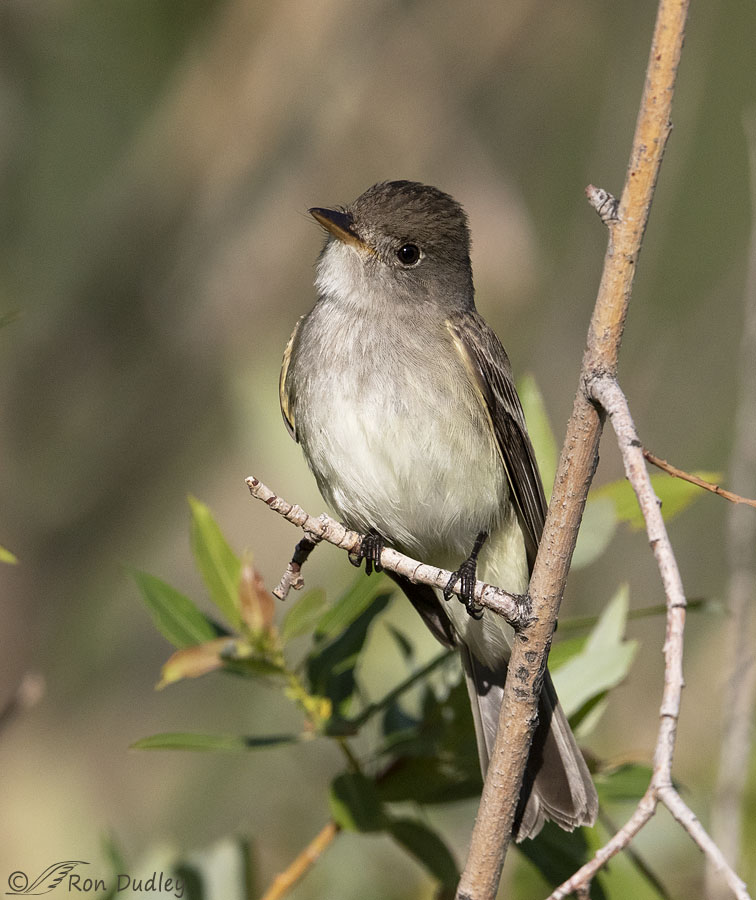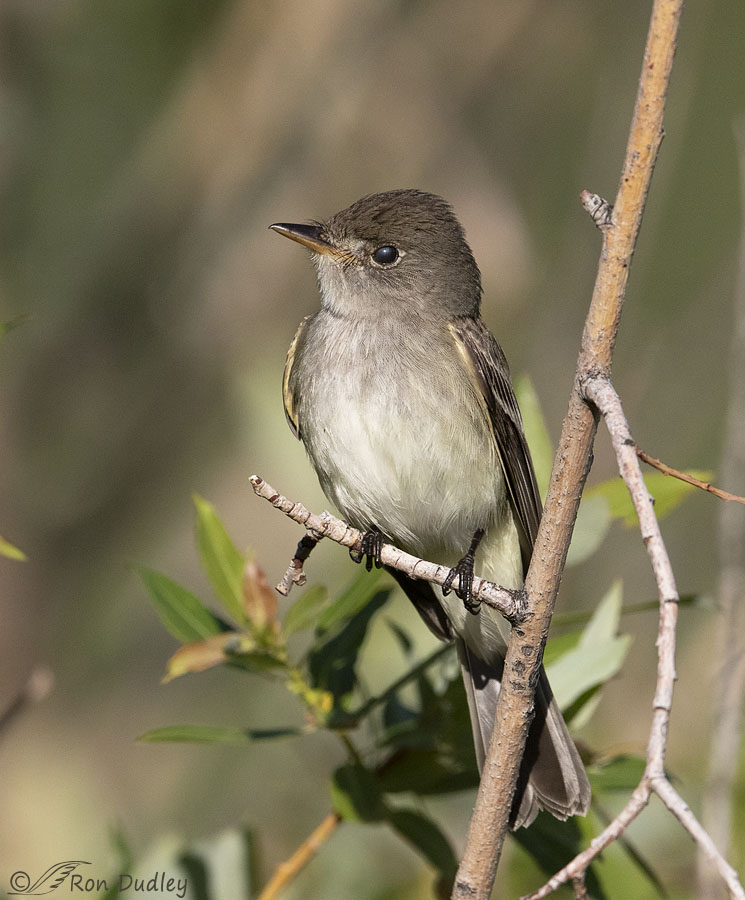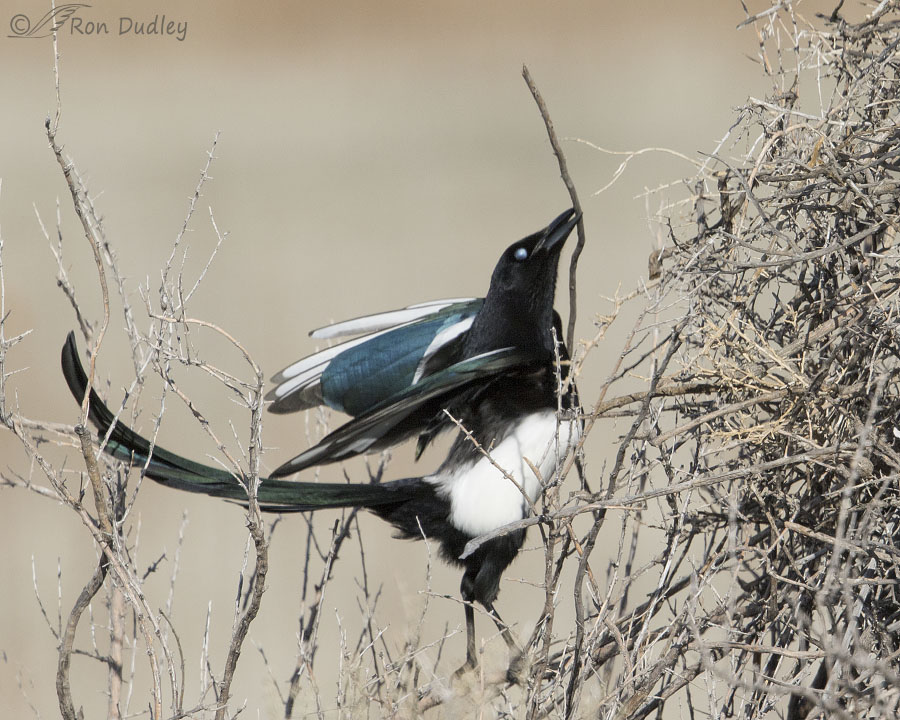When I start composing a blog post I never know where I’ll end up.

1/5000, f/7, ISO 800, Canon 7D Mark II, Canon EF 500mm f/4L IS II USM + EF 1.4 III Extender, not baited, set up or called in
Two days ago in the mountains this Willow Flycatcher made a brief appearance on a very convenient perch in the willow right in front of me. ‘He’ only gave me enough time for about a dozen quick shots before he took off but he was looking away for part of the time and he was close enough that many of my photos weren’t composed very well in the frame (he was too close to one edge or another). I only kept two of the photos and deleted the rest.
The two photos were very similar so I had a hard time deciding which one to feature on Feathered Photography. But eventually I chose this one for two reasons; I like his slightly cocked head angle and there’s nothing funky about his eye.

1/5000, f/7, ISO 800, Canon 7D Mark II, Canon EF 500mm f/4L IS II USM + EF 1.4 III Extender, not baited, set up or called in
This is the other photo I briefly considered. In this shot the eye contact is more direct and some viewers might see that as a plus but his eye is funky-looking because his nictitating membrane is closed. The membrane has caused the pinpoint catchlight to become diffused and slightly strange looking. It’s a natural phenomenon that I try to avoid discriminating against but with little success. To many viewers it just doesn’t look “right”.
In birds nictitating membranes run the gamut from being transparent to translucent to almost opaque. Presumably this flycatcher can see reasonably well through his transparent membrane.

But it’s a different story with the nearly opaque membrane of Black-billed Magpies. This magpie had closed ‘his’ membrane for a moment to protect his eye as he tried to muscle a stick to the top of his domed nest. Magpies are known to flash their membranes as a means of communication with other magpies so having it appear as blue-white against the black facial feathers makes it easily seen by other birds.
Anyway, these are some of the mind games I went through while trying to choose a flycatcher image to post today. Do I discriminate against the membrane just because it looks a little different? How about posting both flycatcher images and highlighting the difference? In this context is it too much of a stretch to transition from the transparent membrane of flycatchers to the opaque membrane of magpies?
This is where I ended up. Today’s post may seem a little unorganized and disjointed but I hope it’s still interesting. And maybe some readers learned a little something about nictitating membranes.
And the mental gymnastics of writing blog posts.
Ron


Some birds can use their nictating membrane to communicate? Now that is something I didn’t know. Another amazing adaptation – to an amazing adaptation.
Thank you.
And I do love the ‘lert attitude in the first shot.
Thank you, EC.
Great flycatcher shots. The nictitating membrane is an interesting adaptation that can serve different purposes in different species. In a photo, it can be troublesome as it draws attention to itself and may distract you from seeing the rest of the bird properly. But in life, I have a very different reaction. It doesn’t stand alone, like in a static photo, but is an integral part of the bird’s activity and can help inform you about a bird’s actions. You see, for example, this membrane over the eye of an American Dipper as it emerges from the water or just prior to diving under the surface. It is fascinating to observe and is not out of place or “creepy” as it may seem in an unmoving photo. Thanks for bringing it to everyone’s attention.
Dan, your approach to the membrane is healthy, rational and pleasantly puts the adaptation and our varied reactions to its appearance in what I would not hesitate to call a “proper” perspective. Thank you for these wise words which make me step back and reflect with a lot more thoughtfulness.
Very well said, Dan. Thank you.
I like it, and I like the first photo with the cocked head, gives the bird personality in my view. Nictitating membranes are an amazing adaptation.
“gives the bird personality in my view”
Agreed, April. That one’s my preference too.
I give all 10’s to your mental gymnastics performance for creativity, technical execution, and because it’s stuff I didn’t know about third eyelids.
I must add there is a touch of creepiness in the eye of the Magpie.
I wouldn’t dispute the touch of creepiness, Lyle. At least as an initial reaction. But I’m fascinated that they’ve adapted to communicate with their membranes. Genes and adaptation are simply amazing and in this case it involves both a physical feature and a behavior..
And thanks for the 10’s.
Three really good photos. The Magpie is smart to close the membrane when working with placing sticks on and into that nest. At 83 and never having had cataract surgery yet I rarely know if a shot I’ve taken has the closed membrane till I get it on the computer screen. With all my eagle shots I have both deleted and kept those with closed membrane. All depends on the context. Like all your followers I really enjoy the stories, explanations, and questions about your photos.
Thanks very much, Everett.
Count yourself lucky that you don’t have cataract problems.
It IS interesting. Magpies really need serious protection from the kazillion sticks they put into building their nest. 😉 Didn’t realize they also communicated with the nictitating membranes. Not nearly as attractive on the flycatcher….. You mind sounds like mine when it gets “cogitating” about something….. 🙂
“You mind sounds like mine when it gets “cogitating” about something…..”
Yup, my brain is a little like a scattergun – lots of pellets going slightly different directions and I never know which one I’ll end up following…
I’ve seen the nictating membrane is a number of my own photos, and knew what it was but never pondered on it, nor took the time to realise that some were more opaque than others. I just always binned the membrane shot because it made me uncomfortable, like a severe cataract. It’s good that you can be more objective about it but I won’t pretend to “enjoy” looking at something that gives me a feeling (yes, I know it’s irrational) that my own eyes are painful. But I stil applaud you for posting these shots and talking about it as unpleasant as I find it.
“I just always binned the membrane shot because it made me uncomfortable”
Granny Pat, that’s completely understandable. I have cataract surgery on the horizon sometime in the fairly near future so I have some of the same reaction.